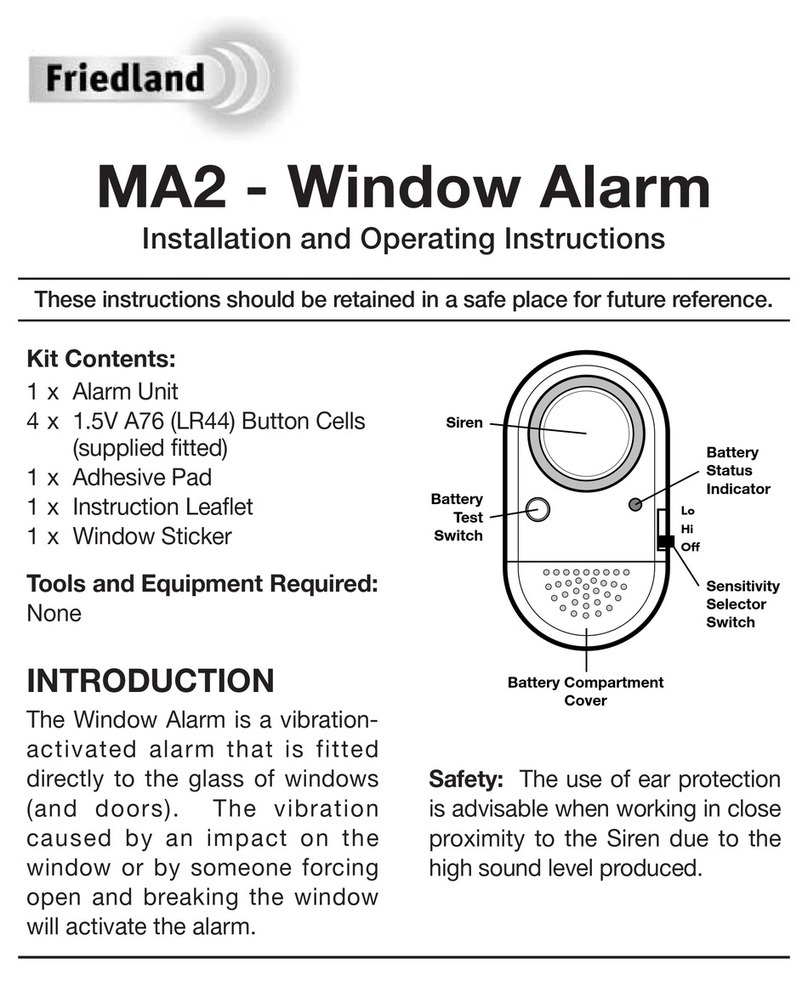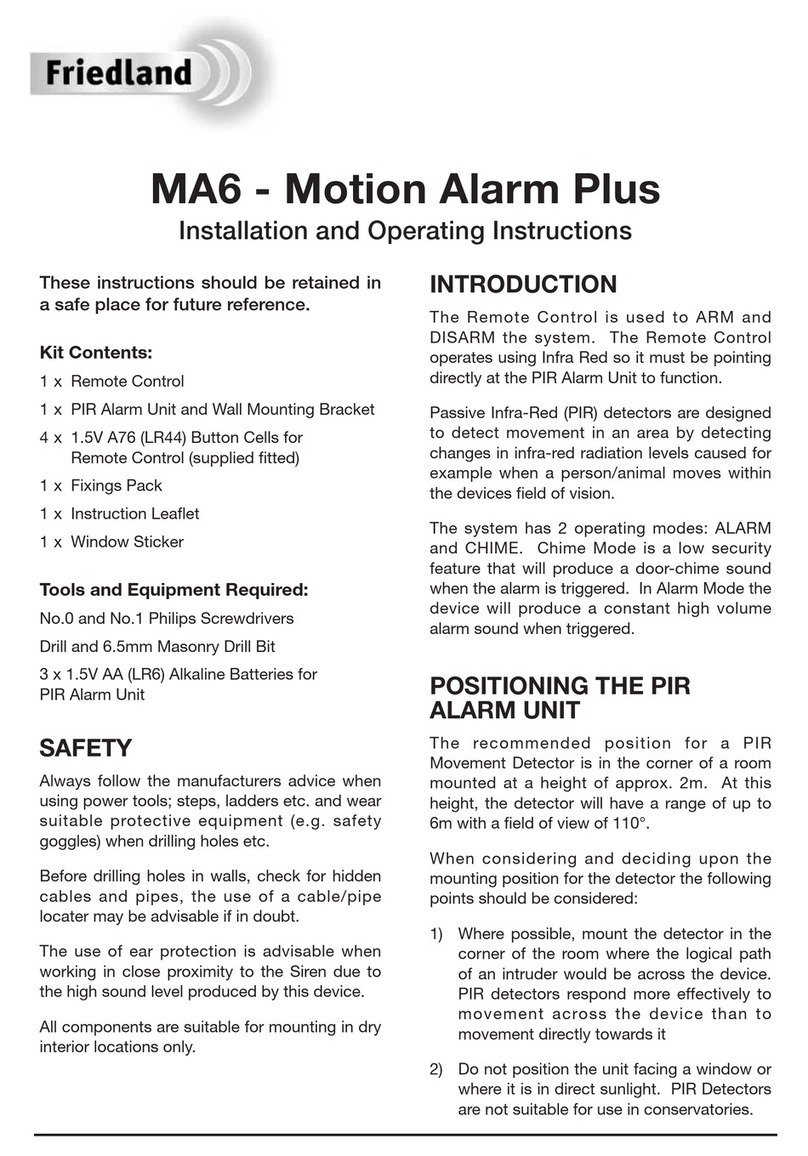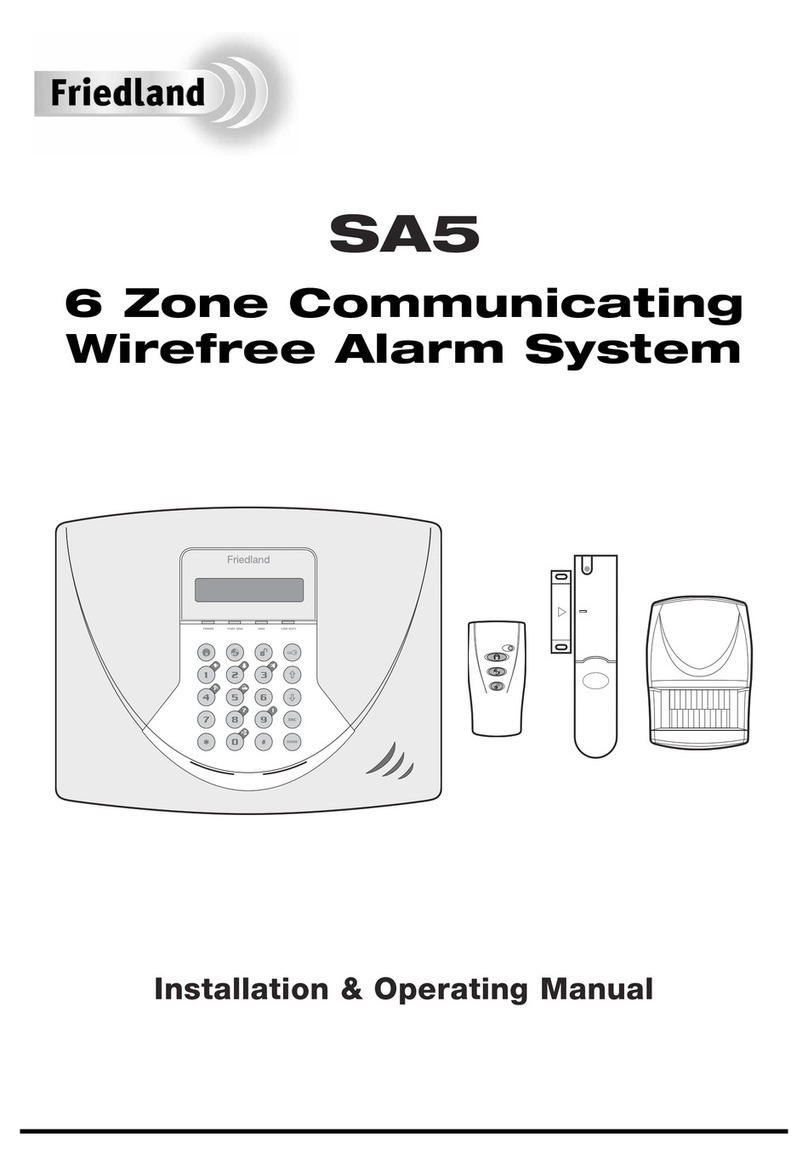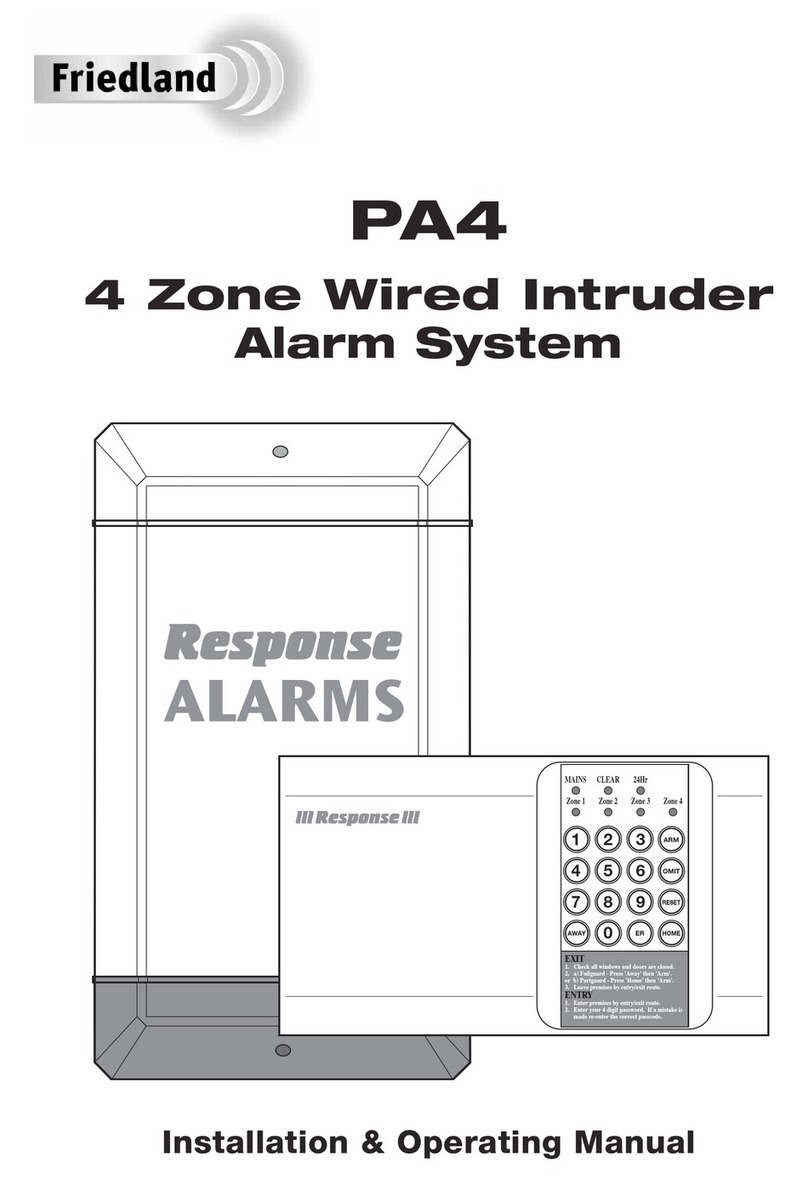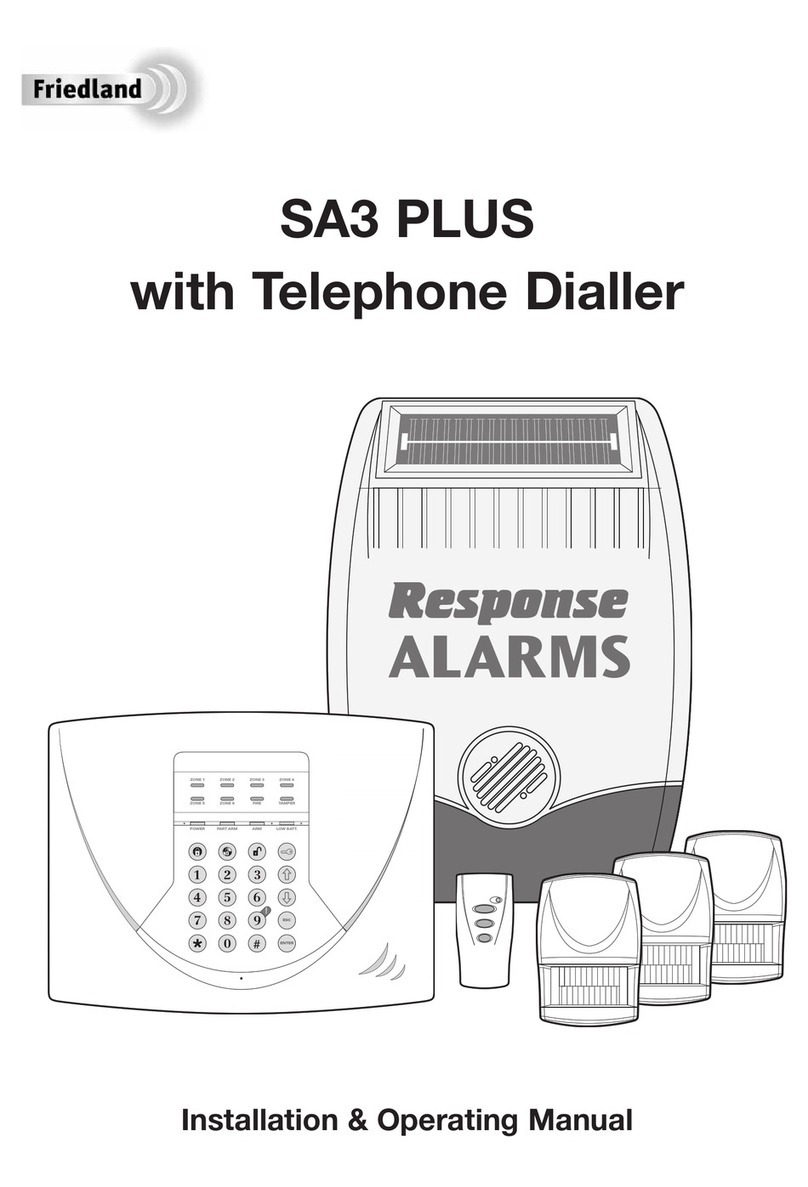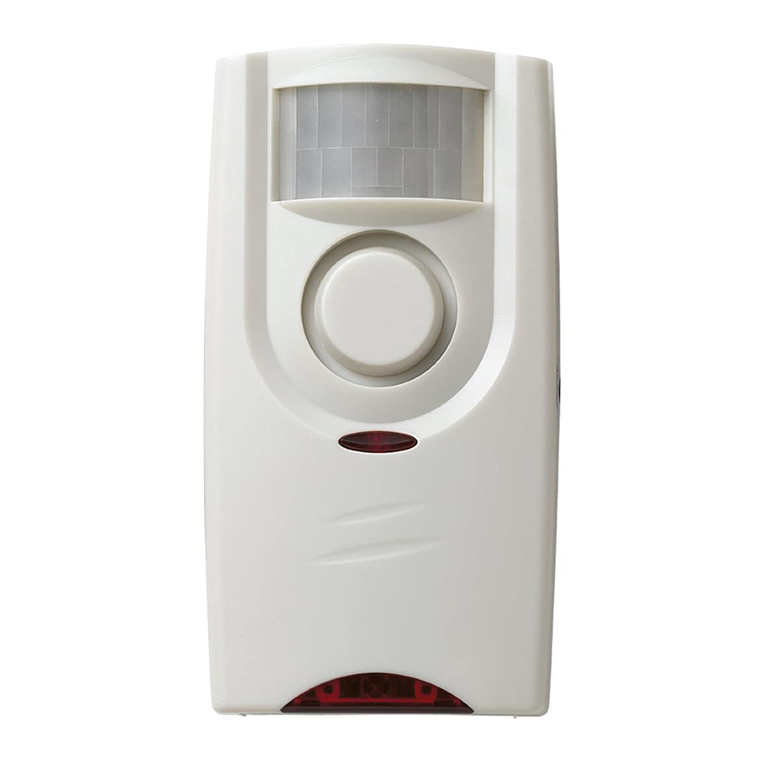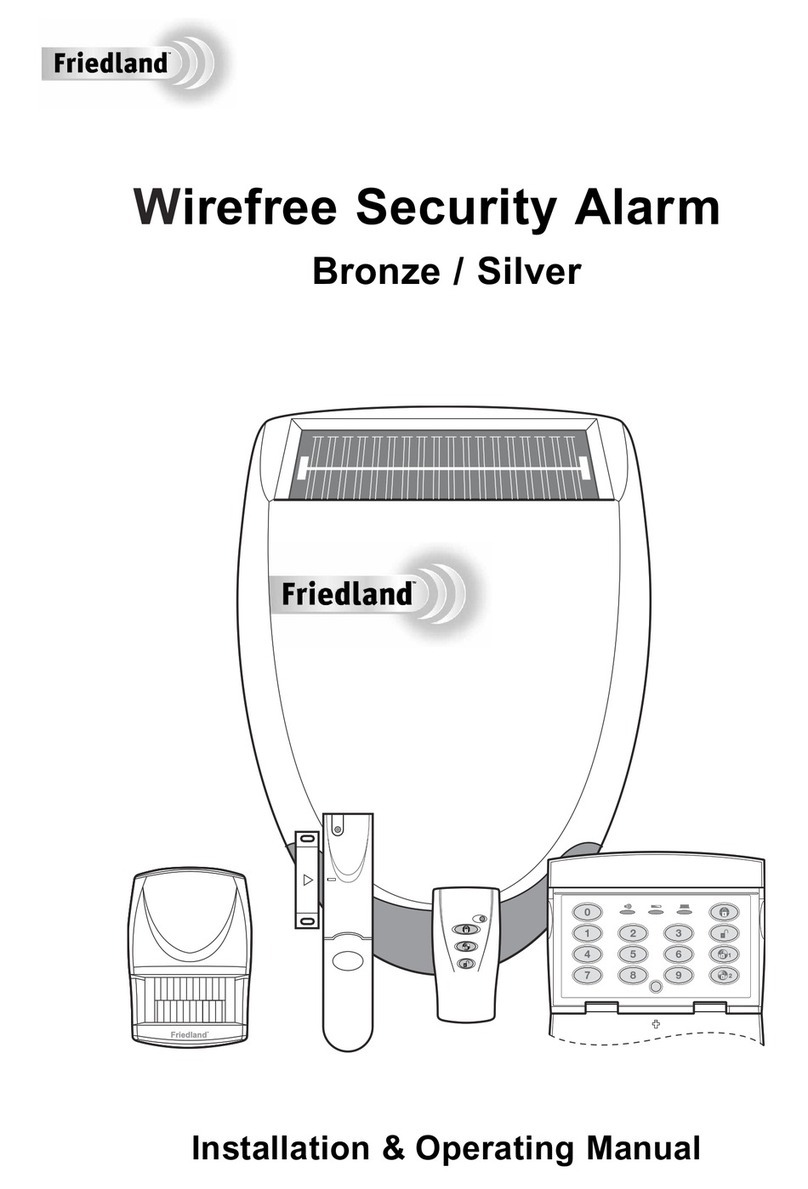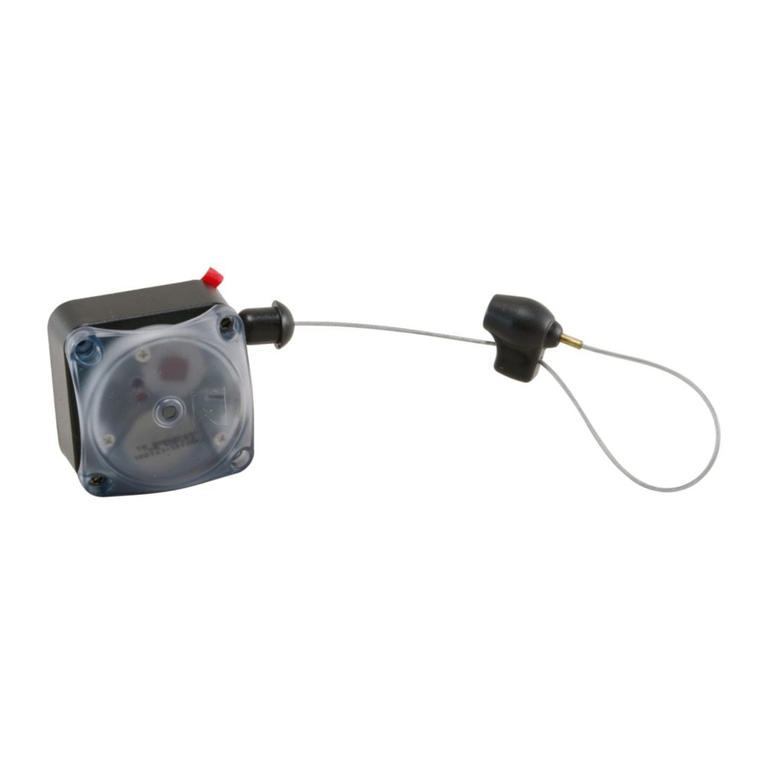
6
FINAL EXIT SET ZONE
Triggering a detector on a Final Exit zone (e.g. front
door) during the Exit-Delay, will cause the delay to
reset to 5 seconds with the system arming 5 seconds
later.
WALK THROUGH ZONE
This feature may be used to temporarily disable
detectors on zones covering the route between the
main entry door and the Control Panel.
If the system is armed and the property is entered via
the “Entry-Door” zone then the setup Entry-Delay will
operate as normal. However all “Entry-Route “ zones
will be disabled to allow free access to the Control
Panel to Disarm the system before the Entry-Delay on
the “Entry-Door” zone expires and an alarm occurs
If access is gained via any zone that is not congured
as the “Entry-Door” then all zones (including those
setup as the “Entry-Route” will operate as normal
according to their normal conguration.
Notes: The zone congured as the “Entry Door” must
be setup with an Entry-Delay time sufcient to reach
the Control Panel and Disarm the system.
Zones congured as the “Entry Route” should be setup
without an Entry-Delay.
OMIT ZONE
A zone may be temporarily omitted when the system
is armed using the Omit feature. When the system is
next disarmed any zones set to Omit will be cancelled.
EVENT LOG
The Control Panel incorporates a memory capable
of storing the last 50 system events. This enables
the user to see which user has Armed/Disarmed the
system and if and when any alarms occurred. The
time, date and details of the event type will be recorded
for each system event.
CHIME
Chime is a low security facility for use when the system
is Standby mode. If the Chime feature is ON, and a
detector on a zone that has its Chime function enabled
is triggered, the internal sounder will produce a low
volume warning tone. A typical use of the Chime
function would be to warn that a door or particular area
has been entered.
VOICE DIALLER
This system incorporates a telephone Voice Dialler that
is used to call for help and/or notify the user that the
system has been triggered and an alarm has occurred.
If the Voice Dialler is enabled and an alarm occurs
the system will call for help using your recorded
alarm message and up to 4 telephone numbers.
When the Voice Dialler is activated it will call the rst
enabled number in the dialling sequence and replay
the recorded alarm messages for the congured
‘PlayTime’. The recipient must acknowledge the
message by pressing the button on their
telephone keypad. If the call is unanswered or an
acknowledgment signal is not received then the next
active number in the dialling sequence will be called.
The dialler will continue calling each number in turn
until either all numbers in the sequence have been
dialled the set number of times or the dialling sequence
is cancelled by an acknowledged signal from the
recipient.
REMOTE MANAGER
The system is designed to interface with the MyGARD
Alarm Monitoring Service, which is a state of the art
Internet based service. It enables an alarm to generate
text/Email messages to up to 6 key holders and can
provide Group 4 Patrol & Response to your property.
Novar ED&S recommends monitoring as it increases
the level of contact with key holders and provides
a greater level of response. The Alarm Monitoring
Service is a chargeable independent service provided
by MyGARD plc.
(See enclosed leaet for further details).
LATCH KEY
When the system is Disarmed the Latch Key facility,
if enabled, will call the rst Latch Key phone number
and replay the user message (recorded under user
setup) for the set ‘Play Time’. The recipient must
acknowledge the message by pressing the button on
their telephone keypad. If the call is unanswered or an
acknowledgment is not received then the second Latch
Key phone number will be called. The voice dialler
will continue calling each number in turn until each
number has been dialled the set number of times or the
3 times then that zone will be ‘Locked Out’ and any
further alarm signals from that zone will be ignored until
the system is disarmed.
Note: The ‘Zone Lockout’ feature can be disabled if
required.
QUICK SET
The system may be fully armed in 5 seconds using the
quick set facility, overriding the programmed exit-delay.
This is useful for setting the system at night when the
Exit-Delay warning beep will be silenced after just a
few seconds.
